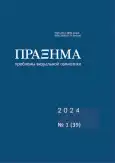The article provides an analysis of the use of the terms “paradigm” and “turns” in bioethics research. Various paradigms in bioethics serve as its images – each paradigm reveals a certain aspect of bioethics. Bioethics can be considered, in the sense of a paradigm, as a disciplinary matrix (Thomas Kuhn), since the transition from traditional medical ethics to bioethics marked a true scientific revolution, and it can rightfully be called a paradigmatic science. More often, bioethical paradigms represent its models, varieties. This is explained by the fact that bioethics is an interdisciplinary activity, and it does not correspond to the idea of “normal science”, as no single discipline can claim an exclusive representation of bioethical research. Among the vast array of bioethics paradigms, the most discussed are the liberal, conservative, American ones, and the paradigm of the principles-based system. All of them are grounded in the principles of bioethics but examine them in different contexts, combinations, and approaches to understanding individuality, autonomy, and human dignity. The presence of turns indicates a different nature of bioethical paradigms. They began to emerge in the mid-1990s to the early 2000s, revealing shortcomings in existing paradigms and directing researchers toward aspects of bioethics that were either not considered at all or received no adequate attention from bioethics researchers. Anthropological, cultural, and relational turns share a sensitivity to cultural diversity, consideration of socio-cultural context, and dissatisfaction with the analytical methods of traditional bioethics. This has led to bioethics adopting methodological tools from empirical disciplines, particularly sociology, giving rise to an empirical turn. Today, the empirical turn continues to evolve (as evidenced by the emergence of "digital bioethics"), introducing into bioethics the methods of increasingly new disciplines while simultaneously giving rise to new challenges. The turns visualized the necessity of interdisciplinary dialogue because, as a scientific discipline, bioethics needed to rely on a specific method, and this became the interdisciplinary method. In this method, contributions from various specialized disciplines are integrated into a synthesis capable of guiding researchers in the search for ethically correct solutions. Bioethics organizes dialogue within the scientific community, involving experts from various scientific fields in addressing current ethical issues in medical science, practice, and healthcare. An example of such a dialogue is interdisciplinary research conducted at Siberian State Medical University (Tomsk, Russia), in which scientists from different disciplines and specialties participated: sociologists, doctors with experience in clinical trials of pharmaceuticals, historians, and bioethics specialists.
 9-29
9-29


 30-43
30-43


 44-61
44-61


 62-81
62-81


 82-101
82-101


 102-119
102-119


 120-142
120-142


 143-166
143-166











